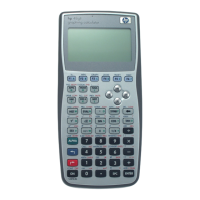5-28 Equation Reference
Kinetic Theory (5, 8)
These equations describe properties of an ideal gas.
Equations:
P
nMWvrms
2
⋅⋅
3V⋅
---------------------------------------
=
vrms
3RT⋅⋅
MW
-------------------=
λ
1
2 π
nNA⋅
V
----------------
⎝⎠
⎛⎞
d
2
⋅⋅ ⋅
---------------------------------------------------
=
mnMW⋅=
Example:
Given: P=100_kPa, V=2_1, T=26.85_°C, MW=18_g/gmol, d=2.5_nm.
Solution: vrms=644.7678_m/s, m=1.4433E–3_kg, n=0.0802_gmol,
λ=1.4916_nm.
Heat Transfer (6)
Variable
Description
α
Expansion coefficient
δ
Elongation
λ1, λ2
Lower and upper wavelength limits
λmax
Wavelength of maximum emissive power
∆T
Temperature difference
A
Area
c
Specific heat
eb12
Emissive power in the range
λ1 to λ2
eb
Total emissive power
f
Fraction of emissive power in the range
λ1 to λ2
h, h1,h3
Convective heat-transfer coefficient
k, k1, k2, k3
Thermal conductivity
L, L1, L2, L3
Length
m
Mass
Q
Heat capacity
q
Heat transfer rate
T
Temperature
Tc
Cold surface temperature (Conduction), or
Cold fluid temperature
Th
Hot surface temperature, or
Hot fluid temperature (Conduction + Convection)
Ti, Tf
Initial and final temperature
U
Overall heat transfer coefficient
References: 7, 9.

